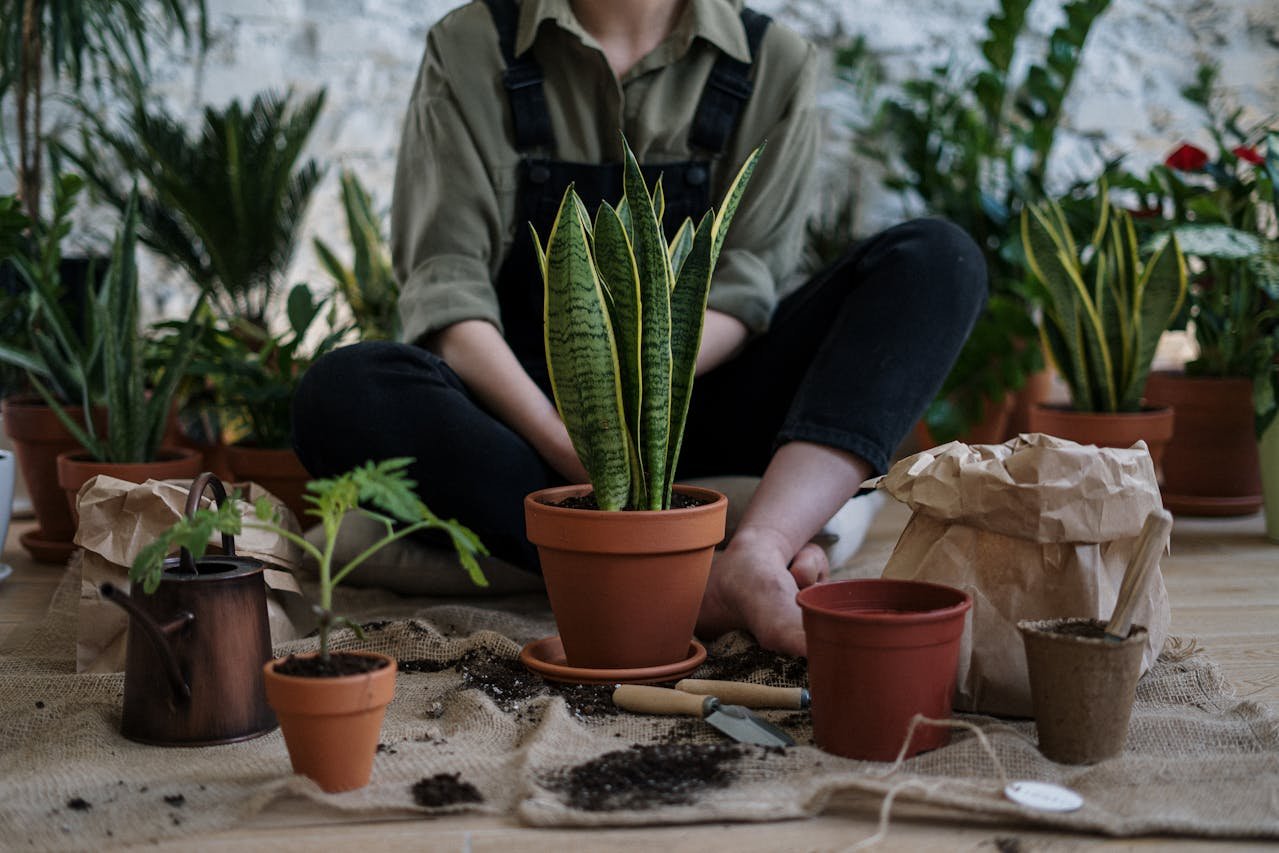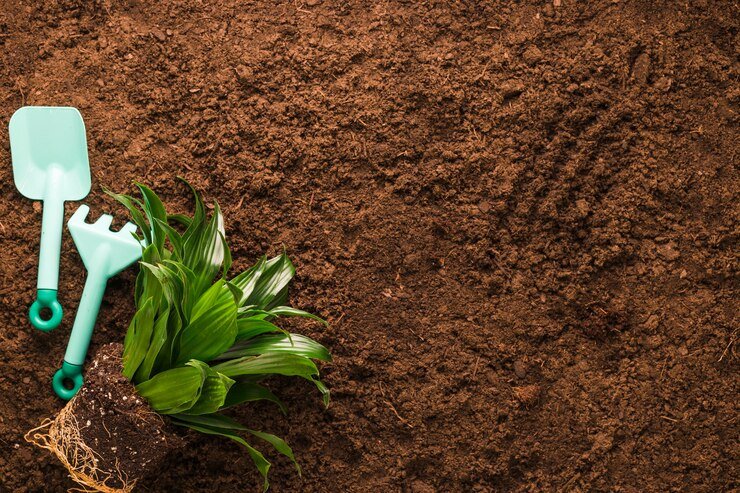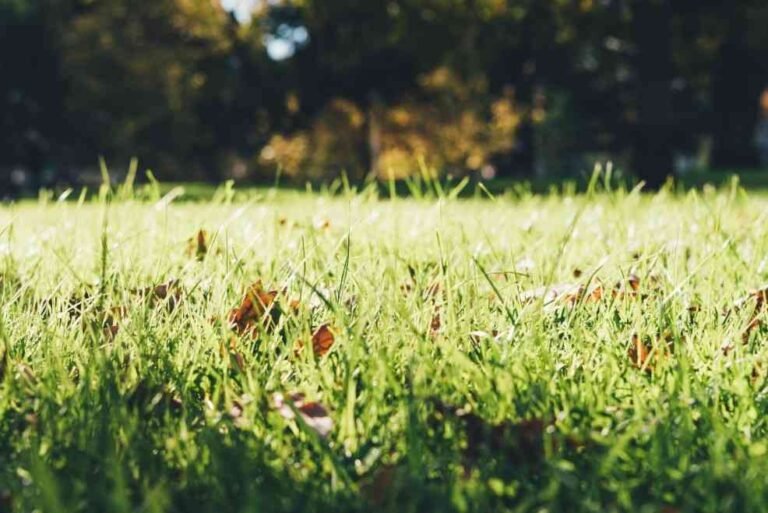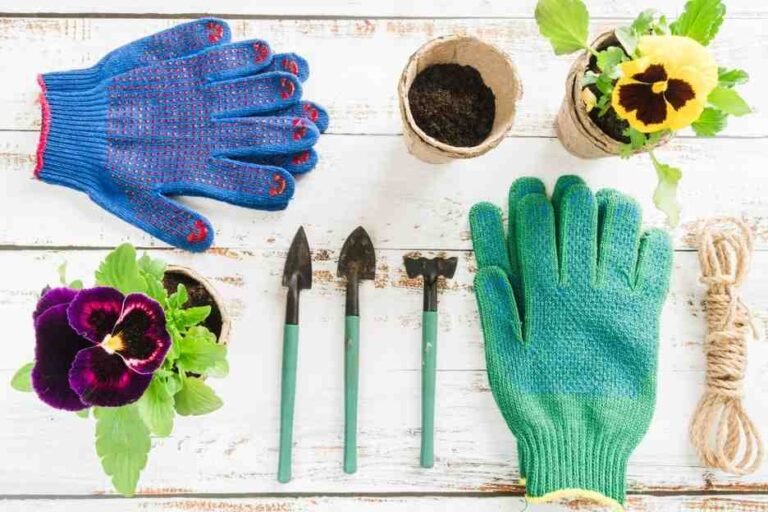Guide to Potting Soil Ingredients and Gardening Tips
Looking for a medium to grow potted plants can be confusing since “potting soil” and “potting mix” are frequently used interchangeably. However, potting soil and potting mix serve different purposes, depending on your needs, such as potting or repotting container-grown plants, starting seeds, or adding soil to garden beds.
Here are the most important factors to consider when selecting potting soil versus potting mix to ensure you’re purchasing the right product.
What is Potting Soil?
Potting soil, sometimes called potting mix, comprises various ingredients that create a healthy environment for potted plants to thrive.
These mixes are designed to prevent soil from compacting, which can suffocate roots and hinder the circulation of water and nutrients. High-quality potting mixes are lightweight, fluffy, and capable of retaining moisture. Both general-purpose blends and specialized mixes are available.
Basic Elements of Potting Soil
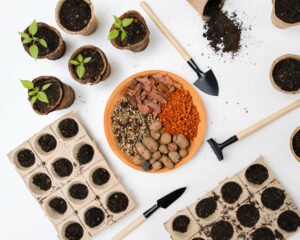
1- Organic Materials
These materials, derived from plants or animals, are the primary ingredients in potting soil. They may include sphagnum peat, rice hulls, processed forest products such as composted bark, manure, bat guano, compost, poultry litter, and earthworm castings. Coconut coir, a renewable resource from coconut husks, is increasingly used as a sustainable alternative to peat moss.
2- Natural Inorganic Materials
These materials improve aeration, drainage, and water retention. Common examples include vermiculite, perlite, pumice, sand, or cinders.
3- Fertilizers
Nutrient sources can include general-purpose time-release fertilizers, synthetic blends, or organic amendments like alfalfa meal, bone meal, or kelp meal. Avoid chemical fertilizers, especially when growing edible plants.
4- Additional Ingredients
Some mixes include lime to balance pH, beneficial microbes, and moisture-retting agents. Manufacturers may also patent specific additives.
Low-quality or generic brands may use fillers, such as topsoil or garden soil, which can reduce texture and quality. Investing in a reputable brand ensures better results. Avoid buying mixes without a clear list of ingredients.
What is Potting Mix?
Potting mix is a soilless medium typically labeled as such on packaging. It contains no actual soil and is specifically designed for container gardening.
Uses of Potting Mix
The potting mix is ideal for most containers, whether indoors or outdoors. Thanks to its lightweight, well-draining properties, it provides the best environment for potted plants.
Common Ingredients in Potting Mix
Potting mixes often include organic components like peat moss and materials that aid in drainage. Some mixes may also contain slow-release fertilizers.
Potting Mix vs. Potting Soil
When purchasing bagged products, it’s important to understand the distinction between potting mix and potting soil.
Carefully read the label to determine what you’re buying. If the ingredients aren’t listed, the bag’s weight can help; real soil is usually heavier than potting mix. Avoid relying solely on packaging design or labels that don’t include detailed information about the contents.
Types of Potting Mixes
All-purpose: Made to be used for both outdoor and indoor use, which includes hanging baskets, house plants, windows, containers for window displays, ornamentals, herbs, and edibles. They can also be found under other labels, such as potting soil containers and potting mix. Ingredients differ based on the brand.
Indoor pots: These are mixes that are specifically designed for plants to use indoors. They are designed to be used for the general purpose of most houseplants. Choose a mix that contains none of the bark or compost that can house fungi insects, a common indoor pest.
Raised beds: These mixes are designed for planting raised beds outdoors. They can be enhanced with nutrient-rich components for the growth of vegetables and other feeders.
Garden soil is soil-based material that can contain organic or inorganic enhancements and fertilizer. It is intended for use in raised beds and in-ground gardens.
Seed beginning mix: This soilless mix drains much lighter and faster to ensure healthy root development. The fine texture helps to promote better germination by allowing for more contact between seeds and the soil, while the sterilized mix assists in preventing growing problems like damping disease.
Mix of succulents and cactus: They prefer soils that are less saline and dry out quickly. The mixes are made up of more perlite, sand, or any other inorganic material to allow for the best drainage and let air reach the roots.
African violet mixture: These renowned flowering tropicals like an environment with a warm, moist climate that resembles their natural habitat. This mix is specially designed to enhance aeration and drainage and retain moisture. It is also suitable for other indoor plants.
Orchid mix: Orchids are found on tree bark in tropical rainforests. These rare flowers require a non-soil planter mix primarily made from bark chips. Perlite and charcoal may be added to aid in drainage. This mix is also ideal for bromeliads and other epiphytes.
Choosing Between Potting Soil and Potting Mix
Container Gardening

You should use a soilless mix for potting when it comes to container gardens, indoor and outdoor potted plants, and seeding.
Their unique blend of ingredients guarantees that the mix will retain moisture and doesn’t shrink, so there is enough room for tender roots to grow. In sterile soilless mixes, the seeds or plants are not exposed to diseases, pathogens, or weed seeds. A soilless mixing is a more controlled growth medium than the soil used for potting.
Non-Container Gardening
If you are choosing a medium to grow for non-container gardens or as a landscape feature, it is recommended to use potting dirt (often sold in the name “garden soil”). It can also be used to fill up large raised beds and large elevated planters.
The soil used for potting contains mineral soil that can be dense, compacted, and soaked in water. While potting soil may contain a substantial amount of nutrients because of its compost, you’ll still need to add additional amendments to improve the soil’s overall texture and drainage.
Why Potting Mix is Better for Aeration, Weight, and Drainage
The potting mix can be the preferred medium of choice for almost all container gardening for three reasons: aeration, weight, and drainage.
- Potting mixes are more supple cultivating mediums that allow air and water to better get into the roots of the small space of containers. This makes for better root air circulation, which is crucial to the overall health of plants.
- It also improves drainage and stops roots from accumulating inside the water. This could cause root decay.
- Additionally, the soft and airy texture of the container mix can make potted plants lighter, which is crucial when transporting large potted plants across a deck or patio.
However, real soil is usually more dense and heavier than the potting mix. If used in containers, garden soil usually has too much water for the roots to let air in and out.
FAQs
What is the difference between potting mix and potting soil?
Both potting mix and soil possess their own strengths. Potting mix is fantastic for providing superior drainage, and potting soil is rich in nutrients due to its composition.
Which is the most suitable soil to plant?
Homemade Potting Mix
- Peat moss to improve aeration and capacity for holding water.
- Fine sand for better drainage and air circulation. As opposed to peat, moss does not hold water.
- Perlite for drainage. It also helps keep the soil soft and light to help hold in the air. Vermiculite can also be used in your soil mix.
How do I create my own pot soil?
Basic All-Purpose Potting Soil Recipe
- Perlite 1 part.
- 1 Part compost.
- 1 part garden soil (aka, plain dirt)
- 1 Part peat moss Coir.
Do I need potting soil?
Yes, you can use gardening soil or potting soil for outdoor plants. Pot soil is the more suitable choice for a growth medium since it’s designed to help plant growth. However, it’s not the ideal option for indoor plants or containers for gardening.

